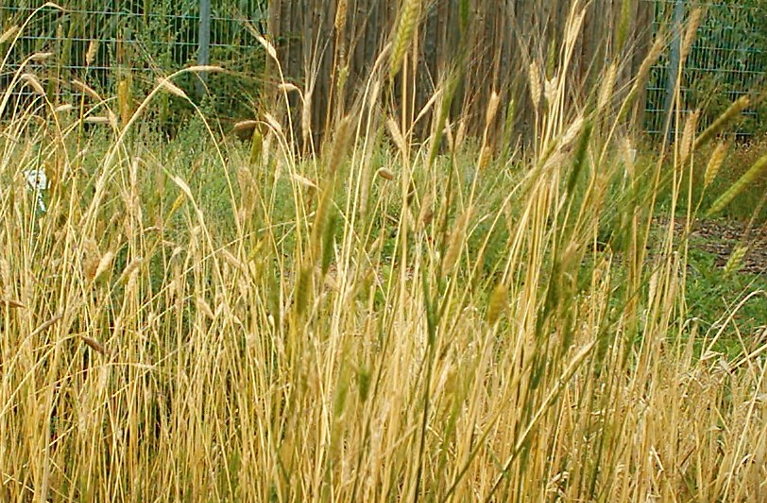And for that minute a blackbird sang
Close by, and round him, mistier,
Farther and farther, all the birds
Of Oxfordshire and Gloucestershire.
So recalled the war poet Edward Thomas when stopping at Adlestrop Station in 1914 – ‘No one left and no one came’. A century on, the railway station is gone, and those famous birds of rural England have plummeted in numbers.
We have few options to halt the collapse of British wildlife. One option, which is gaining ground, is to ‘rewild’ large tracts of Britain, building on the successes of the Knepp Estate in Sussex. But this leaves farmers at a crossroads where one sign points ‘Neglect’ and the other ‘Carry On’ – an unsatisfactory set of options for the environmentally-conscious farmer.
Another alternative, tried, tested and heavily criticised, is to farm organically. The greatest criticism levelled against organic farming is that, due to lower yields, we can’t feed the world organically. Typically speaking, organic farmers are very good at producing animal products. The difficulty comes in producing cereal crops for human consumption, where the modern varieties used, bred for chemical inputs, give lower yields and protein in organic systems. To get a wheat crop good enough for commercial bread flour every four years in a rotation, would be good going. For most of the rotation, the field is in a fertility building ley which is also mown or grazed. While such a system can meet our need for high quality animal products, it is unable to provide the quantity of grain needed for human consumption: the balance is simply too skewed to the animal side to give us the other food we need. However, an alternative to such a trap exists.
In recent years on farms around the country, there has been a steady increase in the growing of ‘heritage’ grains – varieties of wheat, barley and rye which existed before hybrids were first created in the early 20th century. Over the past 20 years, inspired by the principles initially set out in Masanobu Fukuoka’s The One-Straw Revolution, organic farmer John Letts has developed a continuous cropping system using heritage grains that has yielded some remarkable results. First, a crop of about 1.2 tonnes an acre of wheat, barley or rye is produced every year without yields declining – this is a result of only taking the grain from the field and by maintaining a species rich understorey of nitrogen-fixing white clover. Seed is drilled or broadcast into the standing stubble and germinates under a protective mulch of straw after the stubble is mown. While 1.2 tonnes does not seem a large quantity, the flour is of very high quality, and because the same field can produce a crop year after year, on a whole farm system this represents a threefold increase in grain production for human consumption compared to standard rotational organic approaches. With such a method the argument that organic farming cannot feed the world falls apart: organic farming can provide high quality meat, dairy and flour needs. Naturally such an argument requires feeding much less of our arable produce to animals – a position we fully endorse.
To feed the world, we need a reliable harvest. And yet, conventional grain crops in Britain have seen yields fall by 35-40% this season. Only two years ago, in the summer drought of 2018, harvests were also below average. This year, by contrast, farmers growing John’s heritage grains have had a bumper harvest. If unpredictable weather and extreme events continue to increase, as they are forecast to do, the wildly fluctuating yields we have seen will pose a real threat to our food security. Building climate resilience into our food production is essential, and it is here that the great genetic diversity of our populations of heritage grains comes to the fore. With each variety different from another, the whole field is able to respond as best as possible to the weather as it finds it. Our observations on two varieties illustrate this: where Orange Devon Blue Rough Chaff is remarkably adapted to drought, so was the original Hen Gymro adapted to the cold, wet conditions of the Welsh uplands. As a result, a population comprising hundreds of heritage varieties is remarkably resilient to challenging conditions, producing a reliable and high quality yield every year.
Innovative and ecologically minded farmers around the country are recognising the growing market for heritage grains among artisan and home bakers, which is a promising sign for the future of the countryside. As enthusiasm for heritage grain farming continues to grow, the challenge over the next few years will be to maintain the integrity and the diversity essential for resilience in heritage grain crops. To that end, after considerable planning, the Heritage Grain Trust has now been launched. The Trust will provide education, advice and research for the heritage grain movement in Britain. The Heritage Grain Trust’s website sets out these ambitions in more detail.
Instead of despairing about the future of the countryside, now is the time to seize the chance to work for its recovery – we believe that heritage grains can play a crucial part in that recovery. There is a role for each of us to play, whether as consumers, bakers, growers or policymakers, to see that vision triumph. And that, surely, is a cause for joy.
This article was written by Hugh Campbell, John Letts and Marina Chang from the Heritage Grain Trust. They can be contacted at info@heritageharvest.co.uk.
Teaser photo credit: Triticum monococcum, Wikipedia, Public domain, https://commons.wikimedia.org/wiki/File:Triticum_monococcum.jpg





